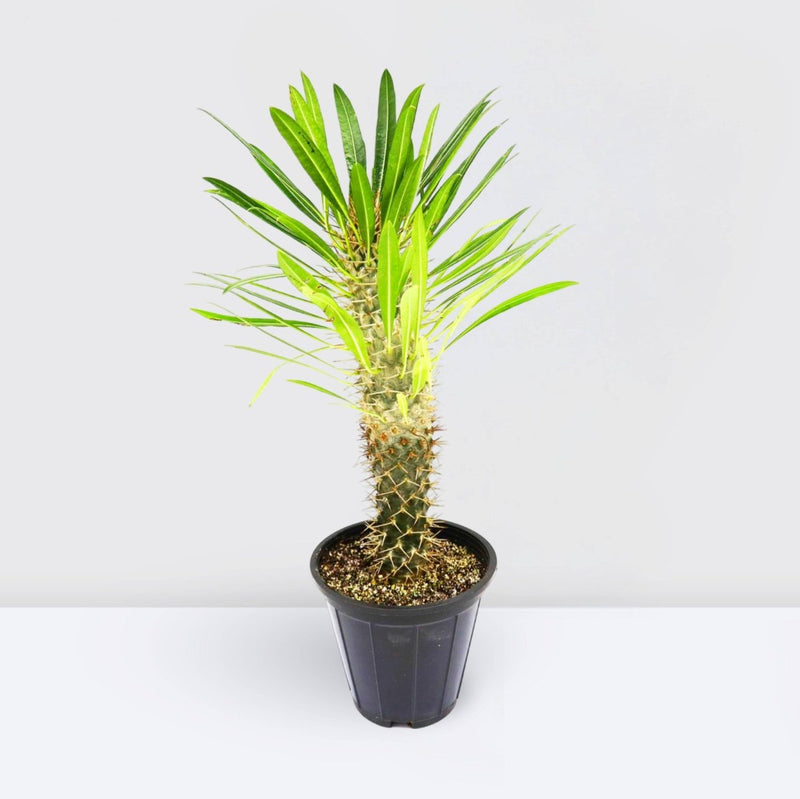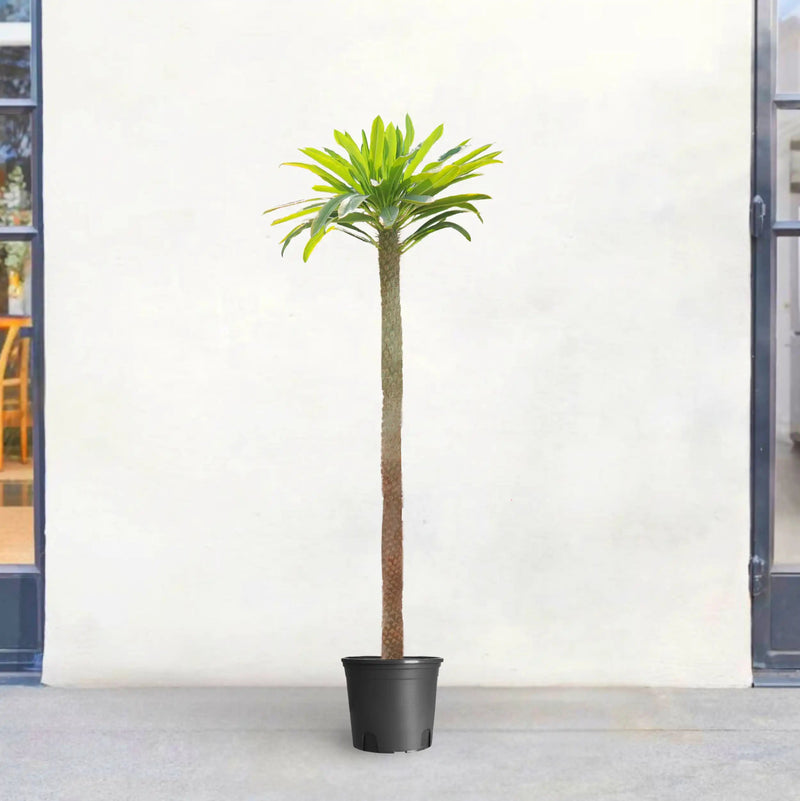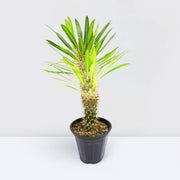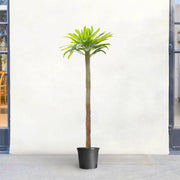Madagascar Palm Cactus - Pachypodium Lamerei
Free returns on all eligible orders
You have 7 days to request a return. All sale items are final sale.
Madagascar Palm Cactus (Pachypodium lamerei) is a striking succulent native to Madagascar that resembles a palm but is actually part of the Apocynaceae family.
Here’s a detailed look at this fascinating plant:
🌵 General Description
-
Scientific Name: Pachypodium lamerei
-
Common Name: Madagascar Palm (though it’s not a true palm)
-
Family: Apocynaceae
-
Origin: Native to Madagascar
🌿 Physical Characteristics
-
Trunk: Thick, spiny, and cigar-shaped. It photosynthesizes primarily through its trunk, which can grow up to 3 meters (10 feet) tall and about 15 cm (6 inches) in diameter.
-
Leaves: Long, linear, and glossy green, typically clustered at the top of the trunk. Each leaf can reach up to 30 cm (12 inches) in length.
-
Spines: Prominent and sharp, covering most of the trunk, offering protection from herbivores.
-
Flowers: Fragrant, tubular white flowers with golden-yellow throats, appearing in mature plants (usually after 10 years). These flowers are about 10 cm (4 inches) wide.
-
Seed Pods: Banana-shaped pods up to 20 cm (8 inches) long follow the flowering phase.
🌞 Growth and Cultivation
-
Light: Prefers full sun and thrives in bright, warm environments.
-
Watering: Requires minimal watering; overwatering can lead to root rot. Let the soil dry out between waterings.
-
Soil: Well-draining soil is essential, similar to cactus or succulent mixes.
-
Temperature: Best suited for warm climates; can be grown outdoors year-round in mild-winter areas.
-
Propagation: Relatively easy to propagate from seeds or cuttings, making it popular among succulent enthusiasts.
🌴 Unique Traits
-
Despite its palm-like appearance, Pachypodium lamerei is not a palm. Its trunk performs photosynthesis, and it only begins branching after its first flowering event.
-
A dwarf variety called “Ramosum” has also been described.
This plant’s dramatic silhouette and low-maintenance nature make it a favorite for indoor and outdoor gardens.
Care Instructions
Light:
Water:
Difficulty: Moderate to care for.
Pachypodium lamerei, commonly known as Madagascar palm or Madagascar palm tree, is a striking succulent plant native to Madagascar, an island off the southeastern coast of Africa. Despite its common name, it is not a true palm but rather a member of the Apocynaceae family, related to oleanders and plumerias.
Pachypodium lamerei typically grows as a tall, upright, columnar plant, resembling a palm tree with a thick, spiny trunk. The trunk can reach heights of up to 6 to 8 feet (1.8 to 2.4 meters) in cultivation, though in its natural habitat it can grow even taller. The trunk is covered with sharp, stout spines arranged in spirals along its length. It produces white, trumpet-shaped flowers with a yellow center. The flowers appear in clusters at the tips of the branches during the warmer months. They are fragrant and attract pollinators such as bees and butterflies.
Care and maintenance
When cultivating Pachypodium lamerei, it's essential to provide it with proper drainage to prevent root rot. Additionally, occasional pruning may be necessary to remove dead or damaged growth. As with most succulents, it's important not to overwater, especially during the plant's dormant period in winter
- Reach heights of up to 6 to 8 feet
- Produces white, trumpet-shaped flowers with a yellow center
- Fragrant flowers
- Sometimes used in traditional medicine
- Native to Madagascar
- Place the Succulents where they will get a lot of indirect sunlight.
- Use safety gloves before engaging with cactus




